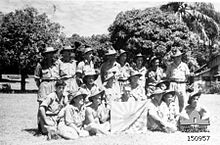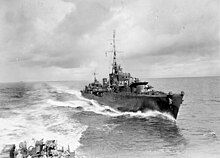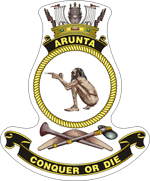
The Howard Government supported the disarmament of Iraq during the Iraq disarmament crisis. Australia later provided one of the four most substantial combat force contingents during the 2003 invasion of Iraq, under the operational codename Operation Falconer. Part of its contingent were among the first forces to enter Iraq after the official "execute" order. The initial Australian force consisted of three Royal Australian Navy ships, a 500-strong special forces task group, two AP-3C Orion maritime patrol aircraft, two B707 Air-to-Air refuelling aircraft, C-130 Hercules transport aircraft and No. 75 Squadron RAAF. Combat forces committed to Operation Falconer for the 2003 Invasion were withdrawn during 2003. Under the name Operation Catalyst, Australian combat troops were redeployed to Iraq in 2005, however, and assumed responsibility for supporting Iraqi security forces in one of Iraq's southern provinces. These troops began withdrawing from Iraq on 1 June 2008 and were completely withdrawn by 28 July 2009.

The Royal Netherlands East Indies Army was the military force maintained by the Netherlands in its colony of the Netherlands East Indies, in areas that are now part of Indonesia. The KNIL's air arm was the Royal Netherlands East Indies Army Air Force. Elements of the Royal Netherlands Navy were also stationed in the Netherlands East Indies.

USS Bulmer (DD-222/AG-86) was a Clemson-class destroyer in the United States Navy during World War II. She was named for Captain Roscoe Bulmer, and was the last warship of the Asiatic Fleet in USN commission.

The Battle of Balikpapan was the concluding stage of Operation Oboe. The landings took place on 1 July 1945. The Australian 7th Division, composed of the 18th, 21st and 25th Infantry Brigades, with KNIL troops, made an amphibious landing, codenamed Operation Oboe Two a few miles north of Balikpapan, on the island of Borneo. The landing had been preceded by heavy bombing and shelling by Australian and US air and naval forces. The Japanese were outnumbered and outgunned, but like the other battles of the Pacific War, many of them fought to the death.

Operation Chronicle was the Allied invasion of Woodlark and Kiriwina Islands during World War II, in the South West Pacific as part of Operation Cartwheel. An early planning name for this operation was Operation Coronet. The operation was executed without opposition on 30 June 1943.

Sparrow Force was a detachment based on the 2/40th Australian Infantry Battalion and other British, US and Australian 8th Division units during World War II. The force was formed to defend the island of Timor from invasion by the Empire of Japan. It formed the main part of the Allied units in the Battle of Timor.
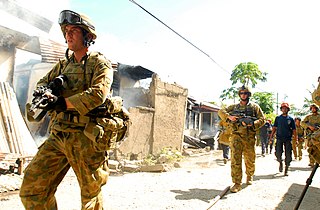
Operation Astute was an Australian-led military deployment to East Timor to quell unrest and return stability in the 2006 East Timor crisis. It was headed by Brigadier Bill Sowry, and commenced on 25 May 2006 under the command of Brigadier Michael Slater. The operation was established at the request of East Timor's government, and continues under an understanding reached between Australia, East Timor, and the United Nations, with the United Nations Integrated Mission in East Timor supporting and helping to develop East Timor's police force. Other countries deploying soldiers to East Timor include Malaysia, New Zealand and East Timor's former colonial power Portugal, operating under independent command.

This is the complete order of battle of Allied and Japanese forces during the Borneo Campaign of 1945. As the campaign was fought in three geographically separate areas and the same air and naval units supported more than one of these battles the order of battle is split into the three areas.

A pioneer is a soldier employed to perform engineering and construction tasks. The term is in principle similar to sapper.
The Pensacola Convoy is a colloquialism for a United States military shipping convoy that took place in late 1941 as the Pacific War began. The name was derived from that of its primary escort ship, the heavy cruiser USS Pensacola. Pensacola was officially designated Task Group 15.5 and Army sources may use the term Republic convoy for the senior convoy vessel. The convoy, dispatched in peacetime, was intended to reinforce the United States Army Forces Far East (USAFFE), created to defend the U.S. Commonwealth of the Philippines and commanded by General Douglas MacArthur, with artillery, aircraft, munitions and fuel, as the threat of war with the Empire of Japan loomed. After war broke out, and Japanese forces attacked the Philippines, the convoy was diverted to Brisbane, Australia.
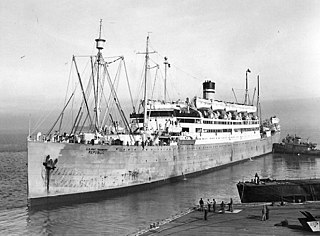
USS Republic (AP-33) was a troop transport that served with the US Navy during World War II. In World War I she served with the Navy as USS President Grant (ID-3014) before being turned over to the Army and named Republic. The ship was renamed the President Buchanan in 1921 before reverting to Republic in 1924.
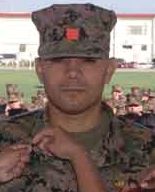
The "Red Patch" is a distinguishing marking worn by United States Marines. The "Red Patch" is specifically worn by landing support personnel with the MOS 0481, or Marines attached to a landing support company/battalion.
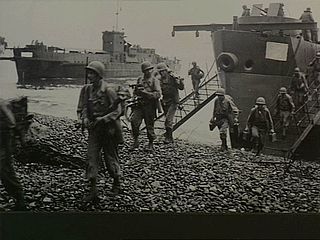
This is the order of battle of Allied and Japanese forces during the Landing at Saidor in 1944.

The order of battle of Australian forces during the Korean War consisted of one, and later two infantry battalions, naval forces of one aircraft carrier, two destroyers, and one frigate, as well as air forces consisting of one fighter squadron and one transport squadron. The first forces were committed in July 1950 from units based in Japan as part of the British Commonwealth Occupation Force, with Australia being the first UN member nation after the United States to commit elements from all three services. A total of 17,808 Australians served during the Korean War, including 1,193 members of the Royal Australian Air Force (RAAF), 5,771 from the Royal Australian Navy (RAN), and 10,844 from the Australian Army, with casualties including 341 killed and 1,216 wounded. Australian forces remained following the end of hostilities, with the last units finally departing in 1956.
This is the order of battle of Allied and German forces during Operation Dragoon in 1944.

This is an order of battle listing the Allied and Japanese forces involved in the Battle of Arawe from 15 December 1943 to 24 February 1944.

MV Duntroon was a passenger ship built for the Melbourne Steamship Company, that saw military service as a troopship between 1942 and 1949. She was built by Swan, Hunter & Wigham Richardson, Wallsend-on-Tyne, and entered service in 1939.
The 1st Australian Logistic Support Group was a ground support unit of the Australian Army during the Vietnam War located at Vung Tau. 1 ALSG commanded logistic support units to all Australian forces in South Vietnam and was composed of engineer, transport, ordnance, medical and service corps units. The unit was initially formed in 1965 as the Australian Logistic Support Company to support the 1st Battalion, Royal Australian Regiment, and was redesignated as 1 ALSG in April 1966 following the deployment of the 1st Australian Task Force as the Australian commitment in Vietnam expanded.

This is an order of battle listing the Japanese and Allied forces involved in the Battle of Milne Bay from 25 August – 7 September 1942.
This is an order of battle listing the British and Commonwealth forces involved in the Indonesia-Malaysia confrontation (1962–66).
